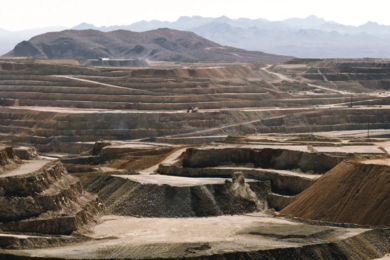At least another 10,000 jobs will go, 16 coal mines will close and State Governments will lose substantial royalties as a direct impact of the Carbon Pollution Reduction Scheme (CPRS), according to independent analysis released by the Australian Coal Association (ACA). These job losses are in addition to thousands of coal jobs already lost since December as a result of the global financial crisis, according to ACA, Executive Director, Ralph Hillman. “Over the first ten years of the ETS scheme, the extra cost burden will ensure further job losses from mining companies cutting costs at mines that remain operating and jobs will also go as a result of both brownfield and greenfield investment moving to countries with lower costs than Australia,” Hillman said.
The research, conducted by the economic consulting firm ACIL-Tasman, is based on a survey covering 86% of Australian coal production, including over 80% of coal exports. Key findings of the study include:
- The decision to exclude coal mining from the emissions intensive trade exposed provisions of the CPRS “was seriously flawed, as it was based on incorrect information”. The CPRS White Paper (p12-26) stated: “Since the majority of coal mines are not emissions-intensive, the government will not provide permits to the activity of coal mining”. ACIL-Tasman found that most coal production is from mines that are above the EITE eligibility threshold of 1,000 t CO2-e per million dollars of revenue
- With an emissions intensity of 1,330 coal is well above the 1,000 threshold for eligibility for EITE permits. But instead of receiving a 66% permit allocation like other trade exposed activities such as LNG and chemicals, it receives just 4.5%. The industry under the current version of the CPRS will pay to the government over $14 billion in the first ten years
- The CPRS will have a major impact on coal industry costs and competitiveness, with significant negative consequences for coal production, investment, employment and royalty revenue
- In the first 10 years of the scheme:
- o 16 mines will close prematurely
- o By 2021 there will be at least another 10,000 fewer people employed directly and indirectly in the coal industry
- o Coal production will be 22 Mt below business-as-usual and, as a result, state governments will forgo significant annual coal royalties.
Hillman: “The ACIL-Tasman study shows quite starkly that the coal industry is being unfairly treated by its exclusion from the EITE provisions of the CPRS scheme. This exclusion will simply export jobs, market share and investment to our main competitors and the emissions will go offshore with the jobs, with no net change to global emissions – so there will be no environmental benefit. The coal industry accepts that there is a wide variation of fugitive emissions from individual mines, but it has provided the government with a simple solution to avoid any windfall gains through a specific coal industry allocation rule that ensures permits are directed to mines in accordance with their emissions rather than production. We are not asking for special treatment for the coal industry. We are seeking fair treatment that will prevent substantial Australian job losses and a loss of long-term investment in Australia.”









